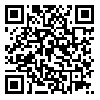BibTeX | RIS | EndNote | Medlars | ProCite | Reference Manager | RefWorks
Send citation to:
URL: http://jhosp.tums.ac.ir/article-1-5565-en.html
2- MSC Student in Health Education, Department of Public Health and Health Education, Students Research Center , Hamedan University of Medical Sciences, Hamedan, Iran )*Corresponding Author), Email:fnoryan@gmail.com ,
3- Assistant professor, Department of Public Health and Health Education, Hamedan University of Medical Sciences, Hamedan, Iran
4- Associate professor, Department of Epidemiology and Biostatistics. Hamedan University Of Medical Sciences, Hamedan, Iran
Background: Considering the importance of hand hygiene in nosocomial infections prevention and the low outcomes of performed researches in hand hygiene, this study aimed at assessing the effective factors on hand hygiene using planned behavior model among nursing and midwifery staff in atea hospital of Hamadan in 2015.
Materials and Methods: This study was a descriptive and cross-sectional study in which all nursing and midwifery staff of the Atea hospital selected through census sampling. Hand hygiene behavior was observed and all participants filled out a questionnaire based on Planned Behavior Model. Data was analyzed using descriptive and inferential statistics.
Results: only 31 participants (21.1%) had hand hygiene behavior higher than average and 123 (79.9%) had lower than average. Hand hygiene was in the lowest rate, 21.3% and 13% after patient contact and prior to action aseptic respectively. Knowledge (84%) and attitude (90.4%) about hand hygiene was high, but the level of perceived control, (53.35%) was at the low level. Also, there were significant statistical differences between perceived control and hand hygiene between subjective norms and hand hygiene (p<0.05).
Conclusions: The knowledge and attitude to adopt hand hygiene behavior is not enough alone. Along with staff training, it is necessary to have hospital managers and physicians training, providing appropriate context and omitting barriers to have suitable hand hygiene behavior in practice.
Received: 2015/09/26 | Accepted: 2015/12/31 | Published: 2016/03/3
| Rights and permissions | |
 |
This work is licensed under a Creative Commons Attribution-NonCommercial 4.0 International License. |





